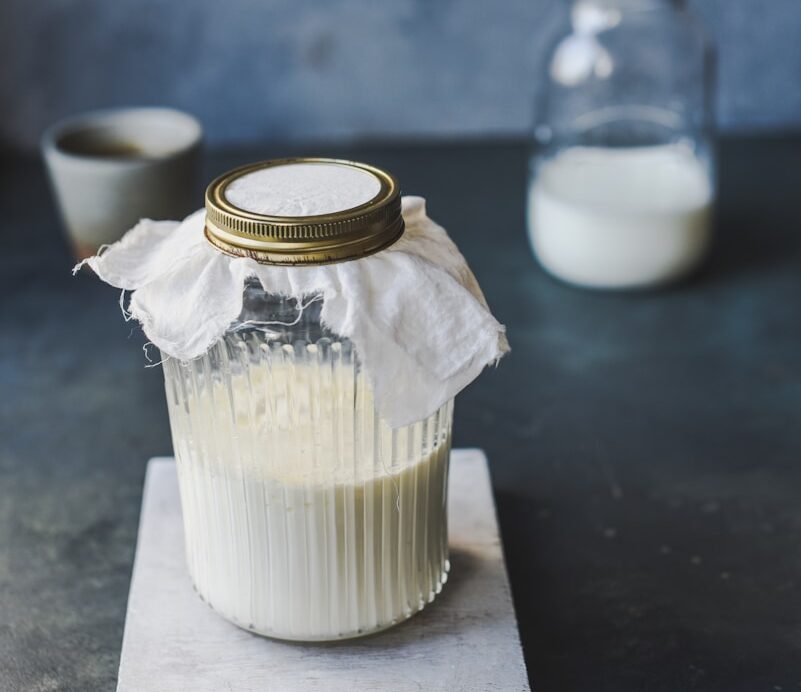Rows and rows of yogurt line the dairy aisle. “There are so many kinds, I don’t know which one to choose…” “Homemade yogurt seems difficult and I’m afraid I’ll mess it up…”
Have you ever felt that way? Many people learn about the health benefits of yogurt but stumble when it comes to putting it into practice.
This article provides a concrete and practical guide to lower the hurdles of “choosing” and “making,” and to lead your fermentation life to success by utilizing scientific knowledge.
Read this article and you’ll never be lost again!
- How to choose the best commercial yogurt for your purpose (gut health, immunity, etc.)
- The simple 4 steps for foolproof “homemade yogurt”
- Is a yogurt maker really necessary? Tips for choosing tools
- The secret of “backslopping” to endlessly propagate the yogurt you made
Why Are “Choosing” and “Making” Important?
The effectiveness of yogurt is greatly influenced by the “type of bacteria” it contains and the “consistency of consumption.” You are unlikely to get the expected effects if you only occasionally eat yogurt with bacteria that are not right for you.
That’s why the most rational approach to a successful yogurt life is to ① correctly “choose” a product containing bacteria that suits your purpose, and ② to know the means (homemade) to “continue” it affordably and without difficulty.
Practical Guide: How to Choose Commercial Yogurt Wisely
Let’s start with what you can do at the supermarket. I’ll explain in three points where to look on the label.
| Checkpoint | Where to Look | Criteria |
|---|---|---|
| 1. Presence of Live Bacteria | Front of the package | Look for phrases like “probiotics,” “live and active cultures,” or specific health claim marks. |
| 2. Type of Bacteria (Strain Name) | Ingredients list | Check if the strain name that matches your purpose (e.g., Bifidobacterium BB536, Lactobacillus gasseri SP) is listed. |
| 3. Sugar Content | Nutrition facts panel | Basically, choose “plain (unsweetened).” For sweetened types, a carbohydrate content of 10g or less is desirable. |
Learn More: The Difference Between Greek Yogurt and Regular Yogurt
Greek yogurt is made by straining regular yogurt to remove the liquid (whey). As a result, the protein is concentrated to about twice the amount, and it has a creamy, rich texture. It is recommended for those who want to consume more protein, such as during a diet or after a workout.
The Ultimate Practice: Foolproof Homemade Yogurt
Once you find a commercial product with a bacteria you like, try propagating it at home as a starter. It’s surprisingly economical, and above all, safe and secure.
Simple 4 Steps
- Sanitize: Sanitize the yogurt maker container and spoon with boiling water and let them cool.
- Mix: Mix 2-3 tablespoons of commercial yogurt as a starter culture with 500ml of milk (whole, unadjusted).
- Incubate: Set the yogurt maker to 40-45°C (104-113°F) for 6-8 hours and start.
- Chill: Once it has set, chill it in the refrigerator for a few hours to mellow the acidity, and it’s ready!
Expert’s Tip: Temperature Control to Avoid Failure
When I was a beginner, my biggest failure was temperature control. I tried to make it at room temperature and it spoiled… (laughs). Lactic acid bacteria are very delicate, and maintaining the optimal temperature, especially 40-45°C, is an absolute requirement for making delicious yogurt. A yogurt maker automatically manages this most important and troublesome part, so I can say with confidence that it is the best investment to prevent the frustration of “failure” and help you continue. The “TANICA Yogurtia S” I use is a treasure because its temperature and timer can be set finely and it can be used for various fermented foods.
Summary: Start with a Small Success
There is no need to overthink everything from choosing yogurt to making it yourself. The important thing is to “try one thing first” based on your knowledge.
First, on your next shopping trip, pick up a yogurt label and check the name of the bacteria. Or, you could take the plunge and get a yogurt maker to try your first “homemade” batch. That small success will be a big step toward changing your body from the inside out and enriching your fermentation life.
References
- Japan Society for Lactic Acid Bacteria. (2014). Science of Lactic Acid Bacteria and Bifidobacteria.


